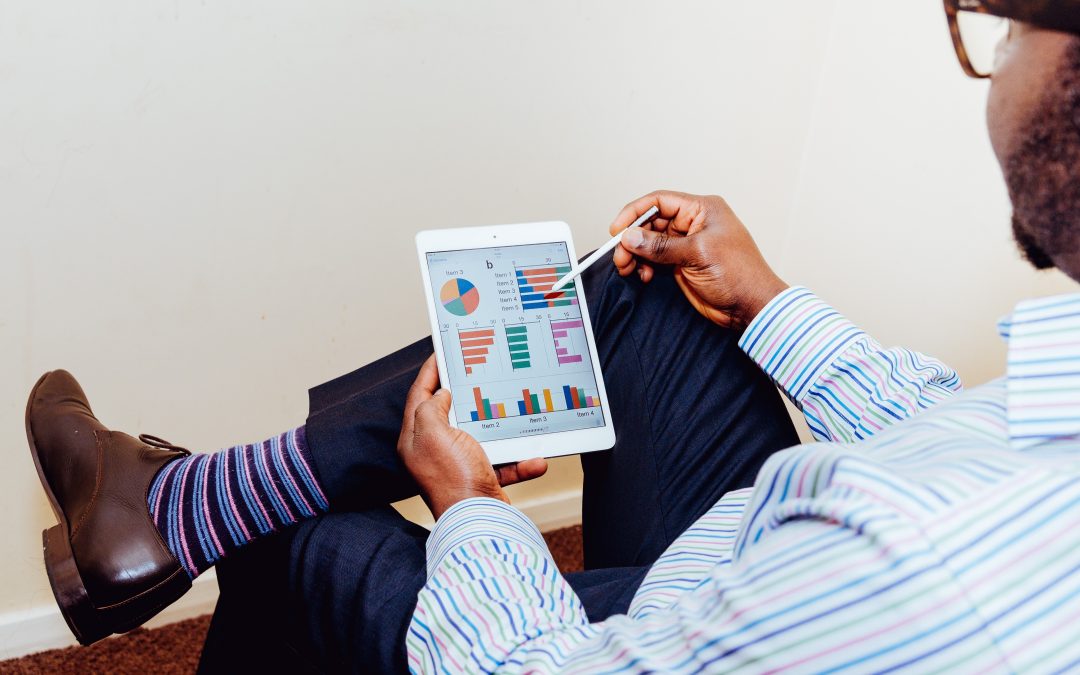
by Scott Howard | Oct 3, 2017 | Marketing and Advertising Insights, ScLoHo's Web World, The Not-So-Secret Writings of ScLoHo, WOWO Fort Wayne Radio Advertising with Scott Howard
Measuring Return On Investment Is Fake Science. At least the way some people try and convince you that it’s measurable. Or I could say Measuring Return On Investment of your advertising is problematic. Here’s why and what’s really important.
When I talk to business owners and managers about advertising options, they want to feel good about the money they are going to spend.
Did you see that?
They want to feel good.
They want to feel smart, confident, happy and wise.
Often times this feeling comes from examining facts and figures and from calculating the Return On Investment they will get from spending (investing) in advertising.
This is such an imperfect science that we should eliminate it all together but like I said, people want to feel good when they are going to spend money.
I was talking with a friend recently and we came up with a return on investment that looks like this:
For every $3000 he spends, he needs 3 sales to break even and the 4th sale produces a profit. This is based on 3 years of being in business and the knowledge that he has of his average sale, expenses and those operating numbers.
Great information, I wish more business owners knew this.
What we don’t know is how to accurately track the Return On Investment of each individual advertising and marketing message.
Here’s why: His truck is logoed up and has his contact info. When he is driving down the road or sitting in traffic, his truck is planting marketing seeds (impressions) on future customers. You can’t accurately measure the Return On Investment of his vehicle wrap can you?
He takes part in consumer trade shows. Hundreds of people have seen his display and dozens have spoken with him each year. Only a small percentage of the people who see his display (the ones he talks to and gets contact info from) are trackable for Return On Investment measurement.
Advertising and marketing messages overlap. We are exposed to a business via multiple methods which nullifies the results of tracking the Return on Investment of each individual advertising and marketing message.
The web was supposed to be the ultimate source of accurate and fool proof tracking, but it falls victim to the same limitations of measurement that off line marketing has.
You could try combining the two which might help, or produce some really weird and useless ad campaigns like this one from 2012 that tried combining Billboards with QR codes: 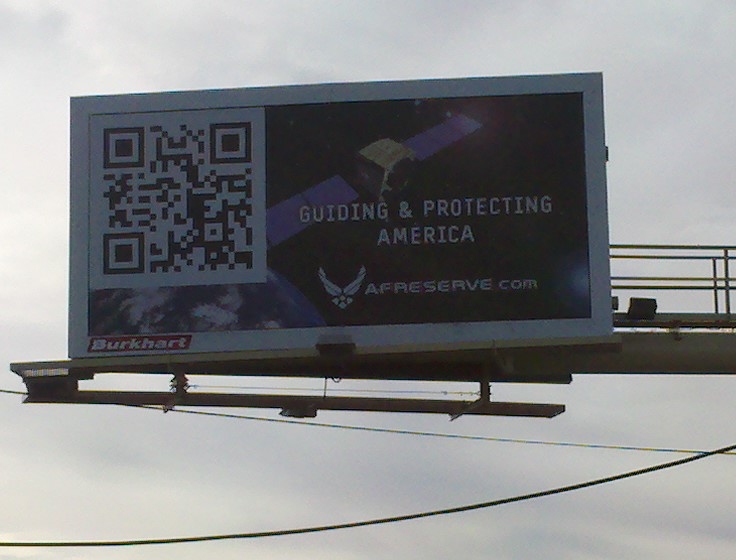
So how do you deal with Return On Investment as a way to measure the success of your advertising campaign and more importantly how do you feel good about spending money on advertising?
Ask the right questions.
Know the limitations.
Deal with trustworthy people.
Here’s a question I usually ask when I am talking with a potential advertising partner:
How are we going to determine the success of your advertising?
And then we will dig in with the knowledge of the limitations I mentioned and come up with an agreeable formula.
Or sometimes we won’t.
In the situations where we know it is impossible to track a Return On Investment of dollars spent versus dollars earned, we look for other methods to determine the success.
Those methods can include:
Year to Year growth.
Perceived name recognition.
Anecdotal stories.
Increased website traffic.
I even have some advertising partners who spend money with me because of the extra stuff that I do that others don’t. The marketing consulting and coaching that I really enjoy.
I strive to provide value that goes beyond dollars because I see things differently. I have a few decades of experience working with a few hundred business people and organizations that were my real life laboratory in this science.
That’s why I say Measuring Return On Investment Is Fake Science. In the advertising and marketing world, it’s an ongoing combination of art and science with the knowledge that it is rare, possibly impossible to be 100% accurate. But that’s okay.
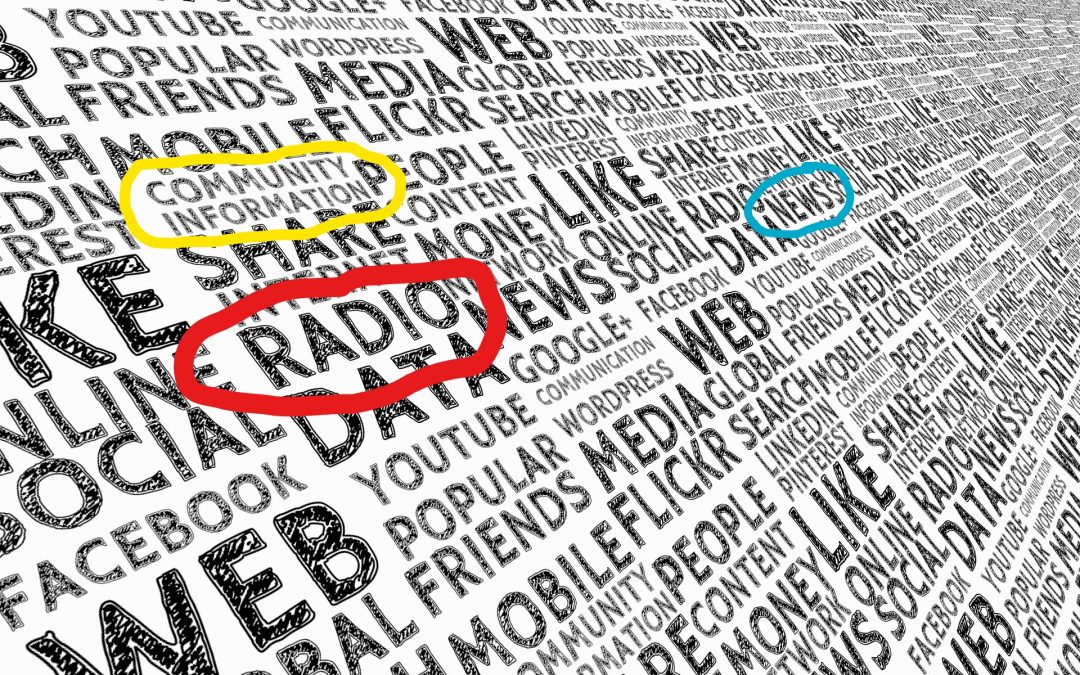
by Scott Howard | Sep 13, 2017 | Marketing and Advertising Insights, ScLoHo's Fort Wayne, ScLoHo's Media, The Not-So-Secret Writings of ScLoHo, WOWO Fort Wayne Radio Advertising with Scott Howard
NewsTalk 1190 WOWO Radio in Fort Wayne, Indiana is going to be 100 years old soon. Despite the most recent doomsday report that AM and FM radio stations would be obsolete before WOWO hits 100, I’m here to present some real reasons that the report is both right and wrong.
Broadcast radio is struggling to remain relevant as consumers embrace streaming platforms, according to a groundbreaking study that examines the disruption to radio caused by digital services.
These trends are crippling radio, which is witnessing historic declines in its audience and its relevance to listeners and advertisers. To survive, radio must innovate, learn from other media, and take control of its path forward into the third decade of this century and beyond.
That’s the intro to a 30 page report that says radio stations like the ones I work for are going the way of the phone book. Here’s a direct link to the entire report if you want to really dig in.
A dozen years ago, I was making the same prediction. Music radio was going to be a thing of the past. At the time I worked with legendary Fort Wayne WXKE Radio Icon Doc West and Doc knew the answer to the problem of music radio stations losing listeners to streaming services and satellite radio stations. Live and Locally Relevant. That was the mantra that Doc used to stay at the top of the heap of radio personalities back then.
WOWO radio used to be a music station when I was a kid and the most listened to radio personality before Doc West was Bob Sievers. His morning program on WOWO had 90% of the available audience tuned in. Farmers for the farm reports, kids like me, waiting to hear the weather, well, actually the school closings and everyone else listened to Bob on WOWO to know what was going on. Bob and WOWO were Live and Locally Relevant.
My reason for predicting the demise of AM & FM radio back then was the digital age as auto manufacturers were adding internet to their vehicles. More options for drivers to listen to their favorite music. I knew it would be an evolving change, simply because it would take time for these internet connected cars to replace the older vehicles.

Your Car, a “radio on wheels”
But then something else has kicked in that I didn’t foresee. The Internet of Things.
The IoT as it is called is the interconnection of stuff via the web that we didn’t need to have connected to the web previously.
The ability for your phone to respond to voice commands was a preview of what we have now with Alexa and the other digital personal assistant devices that are becoming common place.
But back to my headline for this story:
Why WOWO Radio Will Outlast The Naysayers
WOWO radio and our sister stations at Federated Media are embracing the digital age. They were the first in Fort Wayne to jump in and offer the radio programming to listeners on what ever digital platform the listeners wanted. Then they went a step further and began producing content that goes beyond what you can get by listening to the AM & FM radio signals. Podcasts, Videos, and plenty of on-demand content that you and I can read, watch or listen to when we want, where we want.

Listen to what you want, when you want
Our music stations, in Fort Wayne including WMEE, K-105 and 98.9 The Bear have been Live and Locally Relevant for decades! WOWO Radio with our News and Talk format for the past 20 years has a couple of national talk shows in the middle of the day, but every 30 minutes, we have Live and Locally Relevant news updates. Fort Wayne’s Morning News with Charly Butcher starts the weekday and afternoons with the Pat Miller Program, bookend each weekday with Live and Locally Relevant programming.
In case you still need another antidote as to the importance of local media, during tragic events like Hurricane Harvey, it was the local Texas radio stations that were the dominate source of information. Television isn’t portable but radio is.
But what about the radio audience overall? Is it shrinking?
After the report from the naysayer, two more reports came out to counter his claims. You can read them here and here.
But what I care about and so do the businesses I work with who use WOWO Radio to advertise by inviting our listeners to become their customers, is what is the state of radio listenership in Fort Wayne Indiana?
I researched it for this story. I have access to the Eastlan radio surveys from 2013 thru today that measures radio listener habits every 6 months in Fort Wayne.
Between 2013 and 2017, the total number of people age 12 and older who listen to a radio station in Metro Fort Wayne has grown by 25,000.
Boom.
Mic Drop.
396,000 weekly listeners in the spring of 2013.
421,000 weekly listeners in the spring of 2017.
How’s WOWO doing? Every survey that I have access to (including before 2013) show that WOWO radio continues to lead the pack with over 100,000 listeners every week, and 98%+ are grown ups.
In about 8 or 9 years WOWO will be celebrating a century of service. Now is the right time to join the other advertising partners who benefit from being on WOWO. Contact me to find out how.
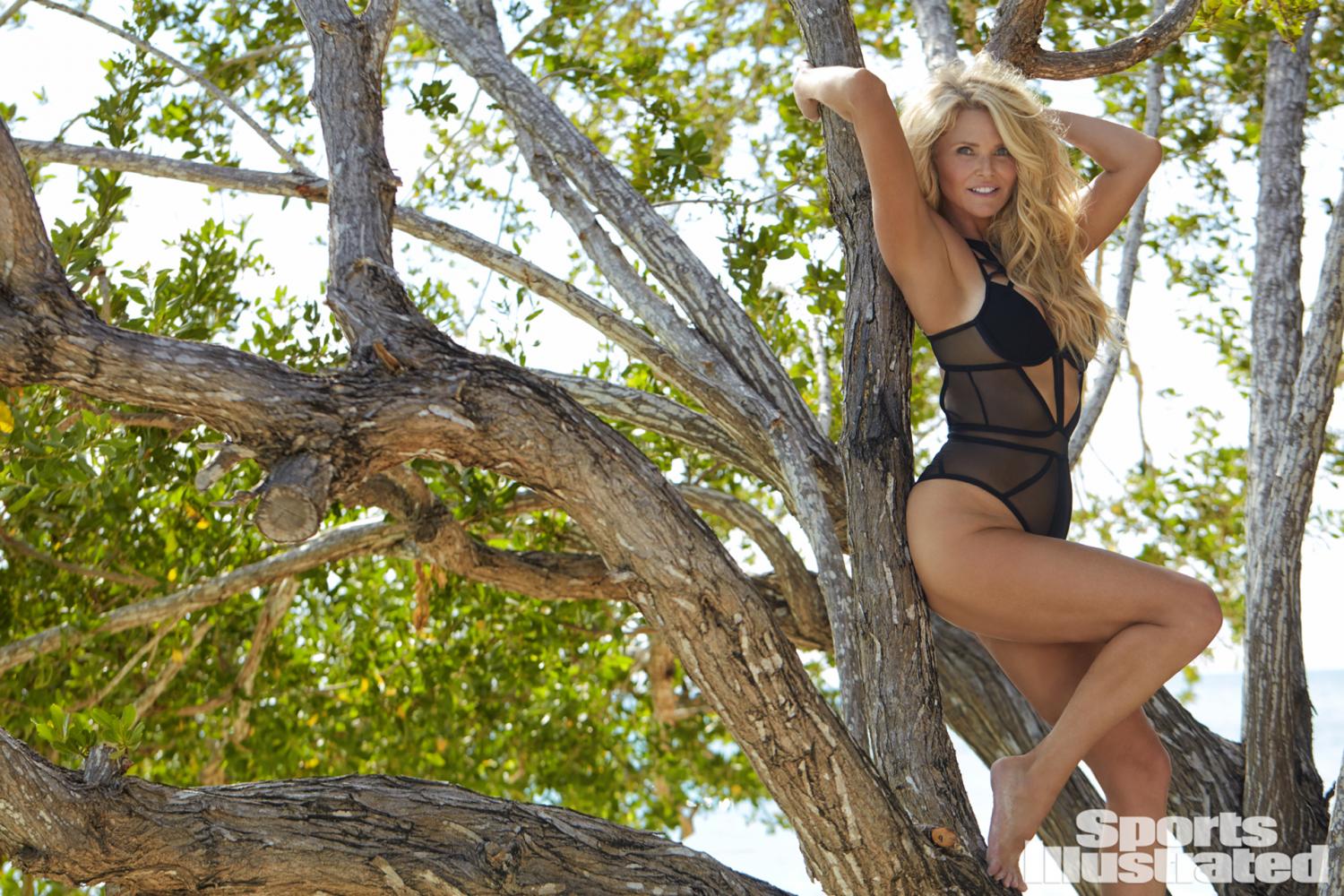
by Scott Howard | May 25, 2017 | Marketing and Advertising Insights, ScLoHo's Collective Wisdom, The Not-So-Secret Writings of ScLoHo, WOWO Fort Wayne Radio Advertising with Scott Howard
I was reading an article from Mediapost that mentioned that baby boomers who are becoming senior citizens are not what you might expect. To illustrate their point they pointed out that at age 63, Christie Brinkley could be considered a “senior”.
She is a Baby Boomer and she was featured along with her two daughters in the 2017 Sports Illustrated Swimsuit issue.
Since a big chunk of the WOWO radio listening audience is the Baby Boomer generation, I ask this question:
Does Christie Brinkley Listen to WOWO Radio?
My answer is defiantly not. Well maybe, but not likely.
Since she doesn’t hang out in the midwest and I’ve never heard her call the Pat Miller Program to express her views on, well anything, if she listens, we are not aware that Christie Brinkley is a WOWO Radio listener.
However, over the years I have found many women who will confess to me that they are a WOWO Radio listener and they think that they are a out-numbered.
On one hand, yes, there are more guys than gals that listen to WOWO’s news talk radio format, but not by much. If you were to take 10 typical WOWO listeners and put them in a room, and these 10 represented the WOWO audience, you would have 6 men and 4 women.
I was doing some research recently and from the data I have access to, more women age 40 and older in the Fort Wayne area listen to WOWO than any other radio station. When I look at Baby Boomer women, WOWO has twice as many Christie Brinkley types compared to the other Fort Wayne radio stations.
Let’s circle back to that Mediapost article that mentioned Christie Brinkley.
Quoting here:
Christie Brinkley, who at 63 appeared in this year’s 2017 Sports Illustrated Swimsuit Issue rocking a bikini alongside her daughters—all the proof you need that 60 can be confident, sexy and in the spotlight.
Brinkley said, “In a country that’s very ageist, people love to put you in little boxes. Women feel very limited by their numbers. On a personal level, I thought, if I can pull this off, I think it will help redefine those numbers and remove some of the fear of aging.”
At 60 and beyond, Boomers continue to be a dynamic and powerful consumer segment. They may not be considered young, but their youthful energy has them constantly on the lookout for new and improved products and services that help them achieve the active, full lives after 60 that previous generations could only have imagined.
Here’s a couple of take-aways from the Mediapost article that you can apply to the women and perhaps men who listen to WOWO radio:
1. They represent a large and growing consumer market
At 37 million and growing, Americans in their 60’s have been the fastest-growing age group since the turn of the century.
2. They have big spending power
The average net worth for 60-somethings is significantly greater than it is for Americans in their 20s (by 99%), 30s (+67%), 40s (+27%), and 50s (+13%).
Nearly half (40%) of today’s 60-somethings are still working.
On top of that, many 60-somethings are choosing to forego leaving a large inheritance and instead are opting to spend on experiences they can share with their children and grandchildren in the moment.
3. They’re not slowing down
Today’s 60-somethings know they’ve still got it. Their mindset is characterized by a steadfast belief in their abilities, a desire to learn and try new things, and wanting to raise the bar on what’s possible at this life stage.
They understand the need to care for their health differently than when they were younger, so they pay more attention to their diets, stay informed about advances in healthcare, use supplements and prescription drugs when needed, and take fitness seriously.
4. They embrace technology that matters
80% of 60 – 69 year olds are online, and nearly 8 in 10 of those online use smartphones.
They are leading the charge for devices and services that make their homes more secure and efficient. Next up is technology that will help them monitor and manage their health.
5. They’re a big influence on their adult children.
More than previous generations, Boomers and their adult children like, trust, and go to each other for advice.
When I listen to WOWO radio, I hear ads for home improvement, luxury automobiles, financial products and other big buck items that Baby Boomers are spending their money on.
Want to know more about how to invite WOWO listeners to spend money with you? Contact me.
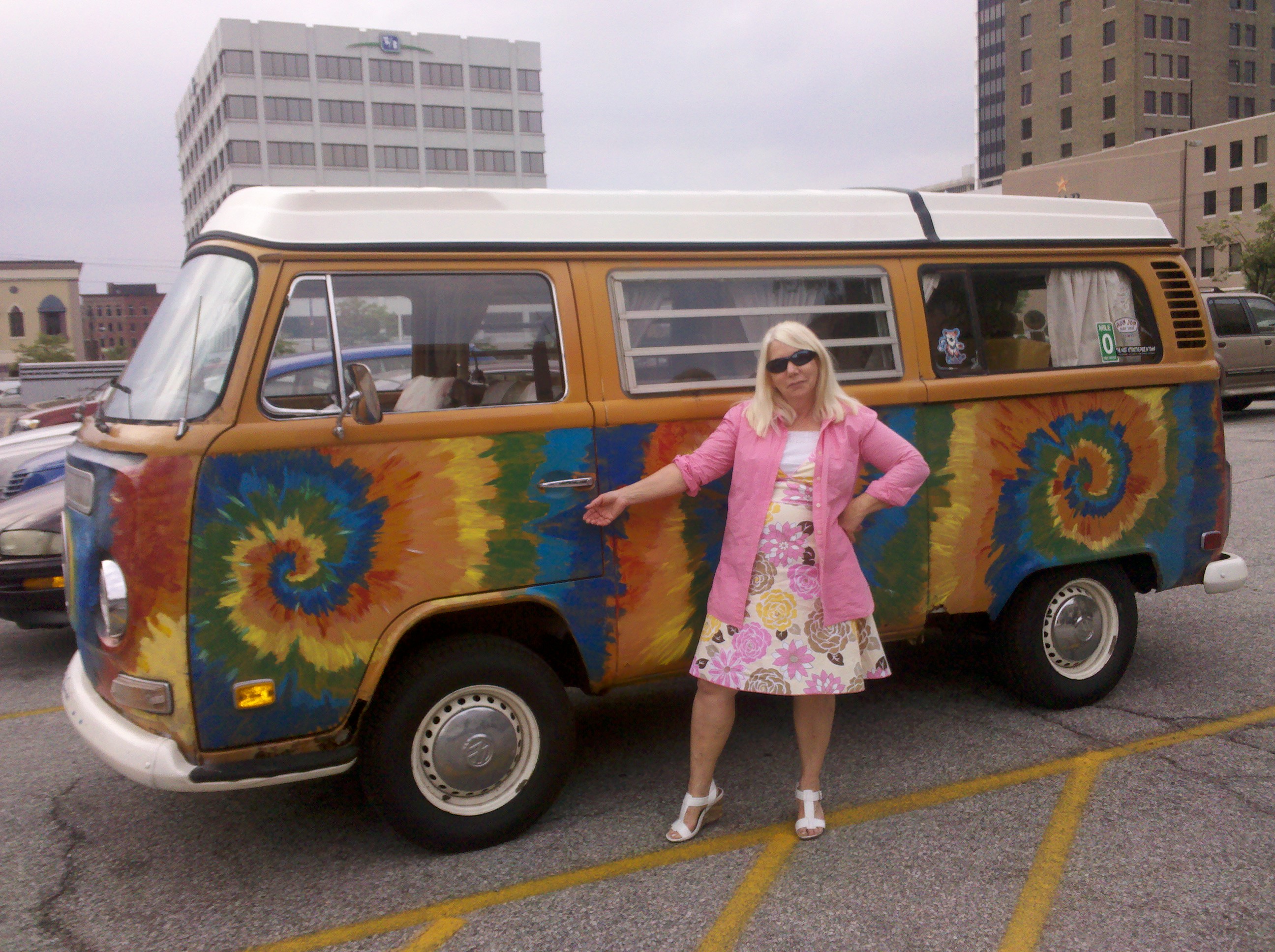
by Scott Howard | Mar 19, 2017 | Marketing and Advertising Insights, ScLoHo's Collective Wisdom, WOWO Fort Wayne Radio Advertising with Scott Howard
I have been reading a series from Mediapost, What We’ve Learned About Marketing To Baby Boomers and this month they published part 3.
Why do I care?
First off, I’ve been studying marketing and advertising for 3 decades.
2nd, the radio station I work for WOWO, has a huge Baby Boomer audience and I want to make sure my advertising partners are doing their best to get a return on their investment with me and other advertising they are doing.
And my wife and I are Baby Boomers too.
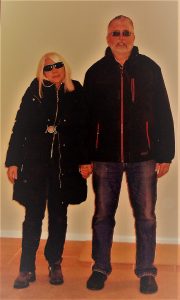
Me & the Mrs. I’m the taller one!
Why should you care?
Unless you are in the generation that you are marketing your business to, you may not be tuned in to the most effective methods that resonate with the people you want to invite to do business with you.
My kids are adults, which I find kinda weird because I remember when I was their age and it doesn’t seem that long ago.
Anyway, I work with people who are half my age, I have friends who are nearly 20 years older than me and others that are 30 years younger. It is important to have an understanding of the differences and how you not only interact but market your business to these different groups of people.
The article from Mediapost has 7 observations. This one has direct application to what I do on the radio:
Gender tends to predispose responses to voice-overs in broadcast advertising
For example, research tells us that male voices are more knowledgeable when describing technical attributes of a product, while female voices are more knowledgeable when describing a product with references to love, relationships, and caring.
Take a moment and read the other 6 and see how you can apply them to your business.
by Scott Howard | Jan 9, 2017 | Marketing and Advertising Insights, ScLoHo's Collective Wisdom
A couple of tidbits of information that applies to the listeners of my radio station, WOWO, in Fort Wayne, Indiana.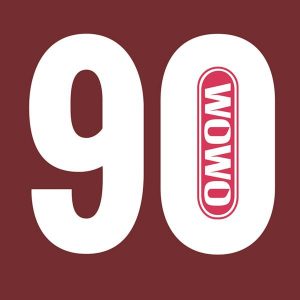
For the past 20 years WOWO has been a news/talk radio station, (out of 90+ years on the air.)
Last month we received results from the rating service we subscribe to and again WOWO dominates with one of the largest audiences in our city. Even more impressive was the number of adults who listen.
I like to call them grown ups because once you reach a certain age you start doing grown up things like buy a house, start having kids, and buying important stuff. There’s lot’s of important stuff to buy once you are a grown up.
One tidbit of information has to do with the format of WOWO, News/Talk. 2016 was a huge year for political news with the election, and now as we move through the first couple of years of the Trump adminstration, there is no slowing down in sight. Nationally the News/Talk radio format was the most listened to in 2016 and the experts predict it will continue.
While it’s nice to have some industry insiders proclaim that, I knew that and you probably did too if you gave it a couple moments thought.
The other tidbit of information I have gathered merges two sources. When I dig into the radio rating information specifically for WOWO, I continue to see a huge number of listeners who are around the Baby Boomer generation.
To give you an idea of what Baby Boomers look like: Michelle Obama is a “young” Boomer, born in 1964 and Hillary Clinton at age 69 is at the other end of the Boomer generation.
Mediapost published this insight on Boomers which applies to most WOWO radio listeners:
What We’ve Learned About Marketing To Baby Boomers by Jim Gilmartin
Our Understanding of the Baby Boomer Consumer
Mark Twain wrote, “The problem isn’t the things that we don’t know; it’s the things we ‘know’ that ain’t so.” His comment is simply a reflection of a common-sense reality. Today, marketing and selling draw on a lot of things “we ‘know’ that ain’t so.”
For instance: Marketers once “knew” (and many still do) that people 50 and older rarely change brands. Everybody “knew” that once consumers settled in on a brand or a company, they became more resistant to switching to another brand or business as they got older. Research shows that to be wrong. We also learned that consumer behavior is pertinent to the subtleties of marketing, advertising, and sales practices. Here is some of what we’ve learned.
1. As we age, our individualism increases
Baby Boomers are less subject to peer influence than are younger consumers.
Marketing Implication: Keeping up with the Joneses is not as important as it once was; thus, advertising that invokes social status benefits does not play as well in Baby Boomer markets as it does in younger ones. Largely freed from worrying about reactions of others, Baby Boomers tend toward greater practicality in buying decisions than younger consumers.
2. We develop an Increased demand for facts
Baby Boomers tend to be less responsive to sweeping claims in marketing messages as they age.
Marketing Implication: Hyperbole turns them off. If Baby Boomers are interested in considering a purchase, they want unadorned facts. Years of buying equip them with knowledge of what to look for and what information they need for an intelligent purchase. However, they often don’t get to the point of asking for facts until a product has emotionally intrigued them.
3. Our response to emotional stimuli increases
Baby Boomers tend to be quicker than younger consumers to reflect a lack of interest in or negative reaction to an offered product that doesn’t make an emotional connection.
Marketing Implication: Such “first impressions” are more likely to be permanent than among younger people, who are more apt to give a marketer a second chance. On the other hand, you can embed a positive first impression especially deep in the emotions of the Baby Boomer — so much so that he or she is often more disposed to be a loyal customer than the younger consumer.
4. We become less self-oriented, more altruistic
Baby Boomers tend to show increased response to marketing appeals reflecting altruistic values.
Marketing Implication: This tracks with shared middle-age shifts toward stronger spiritual values in which concern for others increases. As their altruistic motivations grow and become more powerful, narcissistic and materialistic values wane in influence. Marketers to Baby Boomers must rethink their traditional egocentric appeals in marketing communications.
5. As we age, we spend more time in making purchase decisions
People experience changes in their perceptions of time, and also the meaning and role of time in their lives as they grow older.
Marketing Implication: For example, Baby Boomers often ignore time-urgency strategies in marketing — such as: “Offer good until —,” “Only three left in stock.” Generally, “time is not of the essence” is a common attitude among Baby Boomers, especially those who have retired.
6. We often project what seems to be contradictory behavior
Sometimes we characterize Baby Boomers as selfish and selfless, penurious and profligate, spontaneous and deliberate, and so on. These different attributes lead some to describe Baby Boomers as contradictory — or at least, confusing in their behavior.
Marketing Implication: Baby Boomers are not different in their conduct; they are sensitive to the context in their behavior. For example, a Baby Boomer may use coupons in a grocery store, after which she drives off in a Mercedes.
This activity is not evidence of conflicting behavior, but an example of the rules of thriftiness applied to basics, and the rules of full value applied to discretionary expenditures. In the first case, the price is the common denominator in consumers’ interest, in the second, there is no common denominator because each person calculates the whole value in a unique manner.
Want to know more? Let’s talk.









